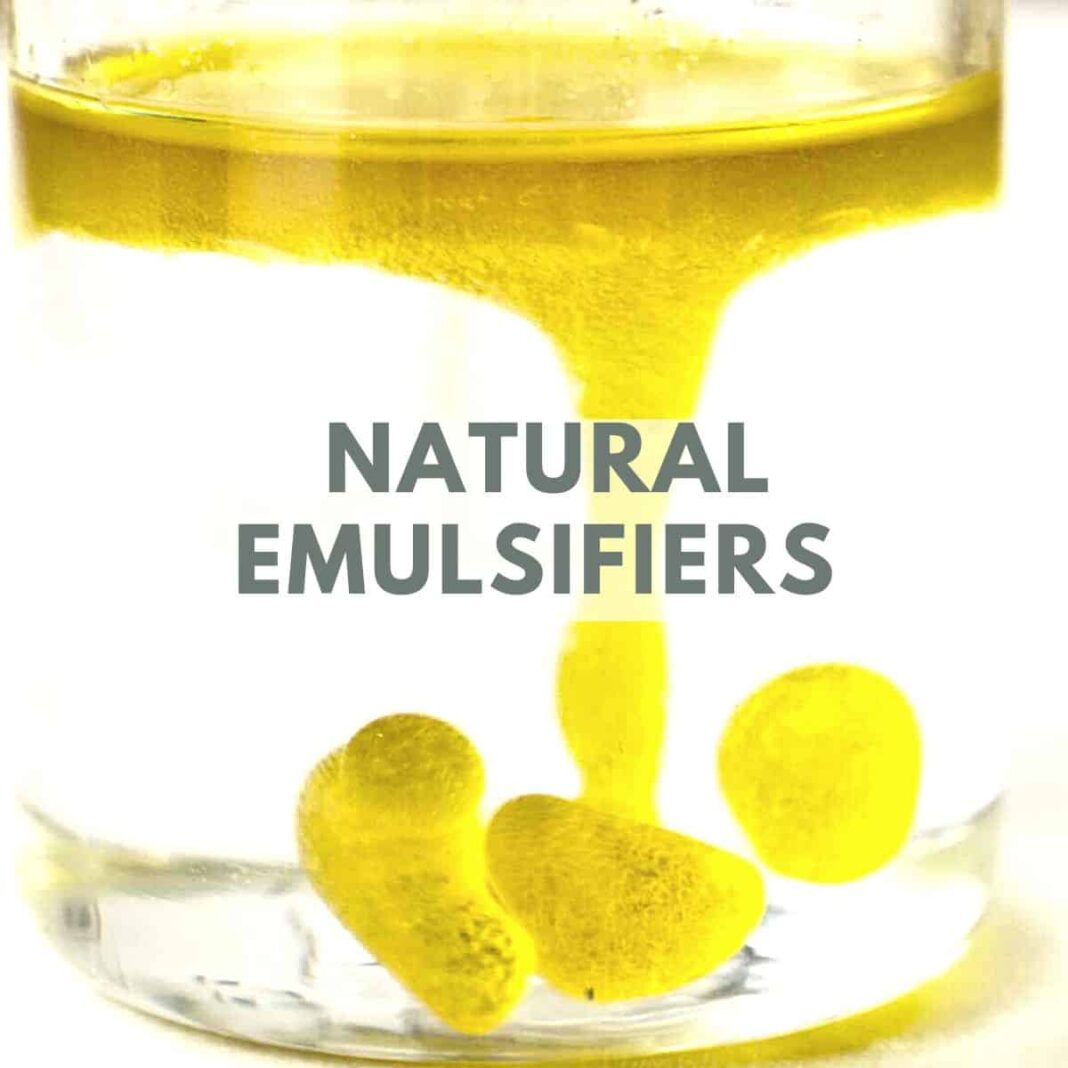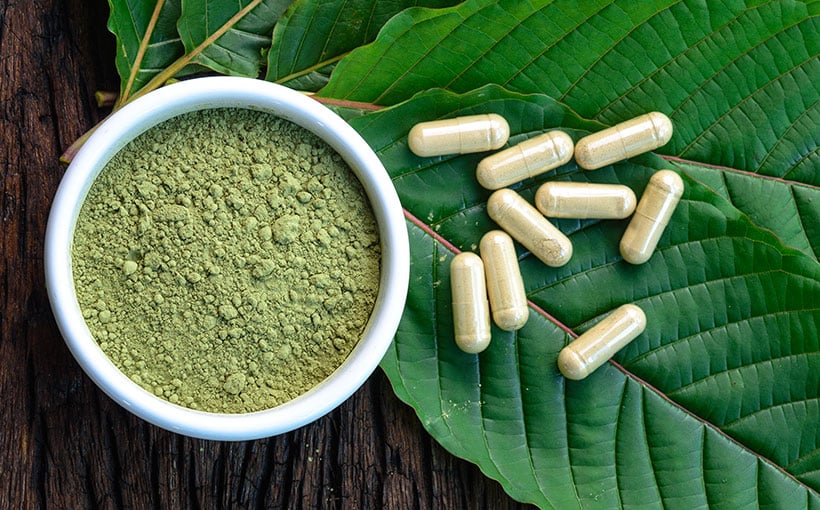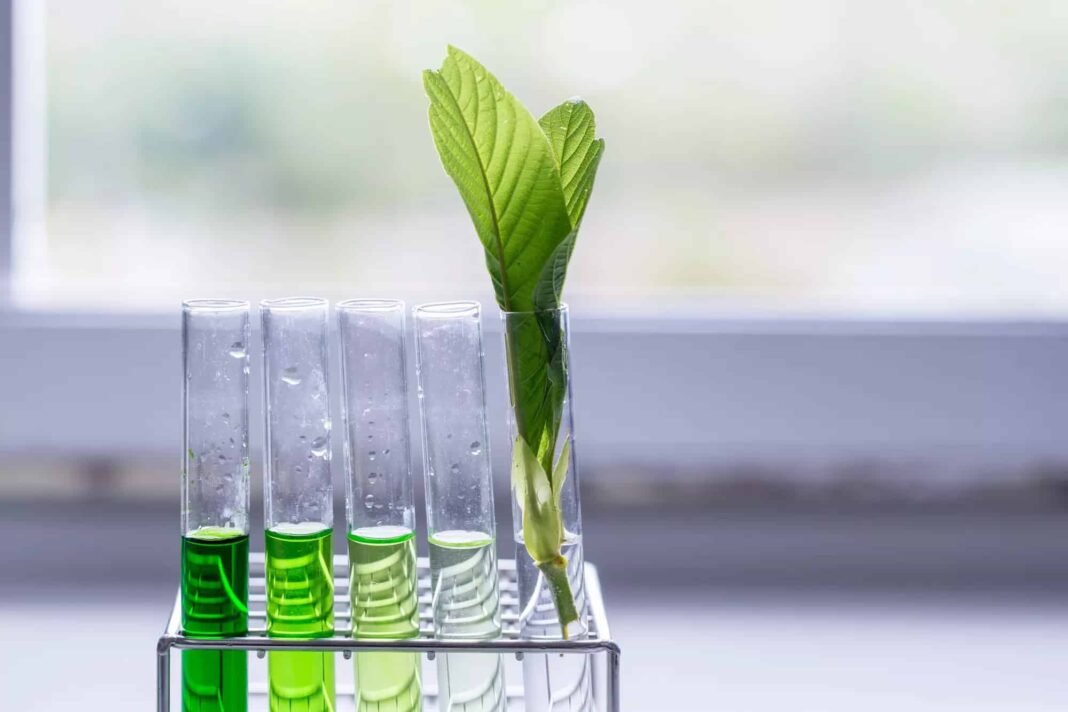Learn about the top 10 best natural emulsifiers in homemade hair and skin care products to ensure your cosmetics are safe and effective.
I love making homemade natural cosmetics. The main advantage is that you can control your ingredients and ensure they are toxin-free. I hardly buy any hair and skincare products from the store. My favorite beauty products include natural face cream, mango body butter, healing salve, DIY nettle lotion, or homemade shampoo.
While body butter or salves don’t require emulsifiers, lotions and creams do. Do you know why? Body butter and salves contain only oily ingredients and don’t require an emulsifier. In contrast, lotions and creams use both water and oil, and water does not naturally mix with oil. This is where emulsifiers come in.
In this tutorial, you will learn emulsifiers, how they work, and the top 10 best natural emulsifiers for your homemade skin care products.
two layers oil and water that don’t mix
What are emulsifiers?
Oil and water don’t mix naturally and tend to separate because of their different molecular structures and the difference in the attractive forces between their molecules. Water molecules are more attracted to each other than to oil molecules, causing them to push the oil away. Therefore, oil and water-based recipes need an emulsifier to mix the ingredients.
Emulsifiers help blend oil and water ingredients to form a stable, homogeneous mixture. According to Shelly Schmidt, Ph.D., a professor in food science, emulsifiers have molecules with both a hydrophilic part, which is attracted to water, and a hydrophobic part, which repels water.
Without an emulsifier, the oil and water in a cream or lotion will separate, resulting in an unpleasant texture and an ineffective product. Emulsifiers ensure that the ingredients are evenly distributed, creating stabilized emulsions.
Emulsifiers are commonly used in food products to improve the texture and consistency of dairy products, baked goods, and salad dressings. Typical examples of natural food emulsifiers include egg yolk, mustard, and soy lecithin.
diy nettle lotion
How do emulsifiers work in formulations?
Emulsifiers form a protective layer around oil droplets, allowing them to mix throughout the water. They are surfactants with unique chemical structures that have both hydrophilic (water-loving) and hydrophobic (oil-loving) properties. The hydrophilic end of the emulsifier molecule interacts with water molecules, while the hydrophobic end interacts with oil molecules, creating a stable mixture. Emulsifiers are used to stabilize the mixture and are thus sometimes referred to as stabilizers.
Based on the emulsion you want to create, there are two types of natural emulsifiers: oil-in-water (O/W) and water-in-oil (W/O) emulsifiers.
Oil-in-water (O/W) emulsifiers disperse small droplets of oil throughout the water, creating lighter and easier-to-absorb skincare. Examples of natural O/W emulsifiers include lecithin and candelilla wax.
Water-in-oil (W/O) emulsifiers disperse droplets of water in the oil phase. These are used in heavier beauty products such as ointments and balms. Examples of natural W/O emulsifiers include Olivem 1000 and lanolin.
Natural vs. Organic Emulsifiers: What’s the Difference?
Natural-based emulsifiers are derived from natural sources such as plants, wax, or lecithin. These natural ingredients are minimally processed and free from synthetic chemicals.
On the other hand, organic emulsifiers are derived from organic sources certified by regulatory bodies such as the USDA (United States Department of Agriculture). In addition to being completely natural, organic emulsifiers must meet specific requirements for how they are grown, processed, and handled. This means they are free from synthetic pesticides and fertilizers and processed using organic methods.
Not all natural emulsifiers are organic, but all organic emulsifiers are natural.
making deodorant stick
Choose the best natural emulsifier for your emulsion.
Many different emulsifiers on the market are used in skin or hair care formulators. They can be oil-in-water (O/W), water-in-oil (W/O) emulsifiers, or cold or hot-processed. For those looking for more natural alternatives to synthetic, below is a list of my favorite natural emulsifying agents to help stabilize, combine, or thicken your skin or hair care products.
1.Olivem 1000 (Cetearyl Olivate (and) Sorbitan Olivate)
Olivem 1000 is a natural emulsifier derived from olive oil. It is a water-in-oil emulsifier that creates stable emulsions with a silky texture and moisturizing benefits to the skin.
2. Olivem 900 (Sorbitan Olivate)
Unlike Olivem 1000, a water-in-oil emulsifier, Olivem 900 is an oil-in-water emulsifier. It helps blend oil and water-based ingredients to create a stable emulsion. Olivem 900 provides a light and non-greasy texture to beauty formulations.
3. Xyliance
Xyliance is a natural and ECOCERT-certified emulsifier made from Cetearyl wheat straw glycosides and Cetearyl alcohol. It creates stable oil-in-water emulsions with a light and smooth texture with moisturizing benefits to the skin.
4. Vegetal/Montanov
This eco-friendly natural emulsifier composed of a blend of Cetearyl Alcohol and Cetearyl Glucoside creates a stable base for oil-in-water emulsions with a light and silky texture. Cetearyl Alcohol is a natural emulsifier found in vegetable oils like coconut and palm oil, while Cetearyl Glucoside is derived from corn and coconut.
5. Lecithin
Lecithin is a natural emulsifier derived from soybeans, egg yolks, or sunflowers. It is great for creating O/W emulsions and provides a protective barrier on the skin.
6. Candelilla Wax
Candelilla Wax is a natural wax obtained from the leaves of the Candelilla shrub, which is native to North America. It is a vegan alternative to beeswax and is often used with other natural emulsifiers to create stable oil-in-water emulsions. Candelilla wax is rich in nutrients and absorbs well into the skin. In addition, it has moisturizing benefits and reduces fine lines and stretch marks.
making calendula cream
7. Xanthan Gum
Derived from corn sugar this natural emulsifier gives the water something called viscosity. It is a thickening and stabilizing agent with moisturizing benefits to the skin. It can be used in both oil-in-water and water-in-oil emulsions and is often used in combination with other natural emulsifiers to enhance their emulsifying properties.
8. ECOMulse (GLYCERYL STEARATE, CETEARYL ALCOHOL AND SODIUM STEAROYL LACTYLATE
ECOMulse is naturally derived emulsifying wax composed of glyceryl stearate, cetearyl alcohol, and sodium stearoyl lactylate. These ingredients are sourced from acyl lactylates, coconut oil, and vegetable oils. Ecomulse is suitable for oil-in-water emulsions.
9. Lanolin
Lanolin, also known as as wool wax, is a popular natural substance produced by the sebaceous glands of sheep. The wax coats and protects the sheep wool and has been derived and used for centuries for its excellent moisturizing capabilities. Lanolin is highly effective at binding water and oil-based ingredients together, creating a stable emulsion. It also has excellent moisturizing properties, helping to keep the skin hydrated and supple.
I have been using lanolin to make this lotion and healing calendula cream, and both appeared non-greasy and stable.
10. Emulsifying wax NF
Emulsifying Wax NF is a plant-based wax composed of fatty alcohols and a blend of vegetable-based emulsifiers. It worked greatly by binding oil and water-based ingredients, creating a smooth and consistent texture in this DIY hair conditioner. Due to its natural and plant-based origins, Emulsifying Wax NF is a great alternative to synthetic emulsifiers. In addition, the initials NF indicate that it conforms to the specifications of the National Formulary.
How to use emulsifiers in your cosmetic products?
First step: Choose the right emulsifier:
Make sure the emulsifier you choose will work with the ingredients in your product and at the correct dosages. Decide whether you want to create an oil-in-water emulsion or a water-in-oil emulsion, and choose a natural emulsifier accordingly.
Second step: Mix oily ingredients.
Blend oily ingredients, you may need to melt them in a double boiler if using butter or coconut oil.
Third step: Weigh and melt the emulsifier.
Weigh the required emulsifier and add it to the oily ingredients. Stir well to combine.
Fourth step: Add water phase ingredients.
Mix the water-based ingredients in a separate container and heat them until they reach the same temperature as the oily melted phase with the emulsifier.
Fifth step: Mixing oil and water.
Slowly pour the water-based ingredients into the oil-based ingredients while stirring continuously. Continue stirring until the mixture thickens and becomes creamy.
Sixth step: Add any additional ingredients.
Once the emulsion has cooled down, add preservatives, use essential oils or vitamins. Transfer the mixture into a sterilized bottle.
Is beeswax an emulsifier for lotion and cream?
While I love using beeswax in my homemade beauty products, we cannot call it an emulsifier. Instead, it is a thickener and binding agent in water-free beauty products such as body butter or salve.
Is Glycerine an emulsifier?
Also known as glycerol or glycerine, vegetable glycerin is a popular ingredient in natural and organic skincare products due to its moisturizing and skin-friendly properties. Derived from coconut, soy, or palm oil, glycerine is a humectant and emollient. However, while glycerine dissolves in water and alcohol, it does not dissolve in oil. Therefore, it cannot serve as an emulsifier.
Do I need to use preservatives?
When adding water to your homemade natural products, it’s crucial to use a preservative to ensure your product is safe and to prevent contamination. Therefore, emulsifiers and preservatives often work together, protecting against harmful microbes such as mold and bacteria.
Are emulsifiers safe?
While emulsifiers used in the food industry can negatively affect gut health and inflammation, emulsifiers used in the cosmetic industry are considered safe if you use natural option.
I make homemade cosmetics because some commercially available products may contain emulsifiers that can harm the skin.
Can you make a cream or body butter without an emulsifier?
It is possible to make a cream or body butter without an emulsifier. Still, it requires a different method, such as using a water-in-oil technique or creating whipped butter without water to avoid emulsifying wax and prevent an unstable emulsion.
Can you substitute one emulsifier for another?
In some cases, you can substitute emulsifiers for one another. Still, it depends on the specific formulation and the product’s intended use, as each emulsifier has unique properties and characteristics that affect its performance, texture and consistency.


